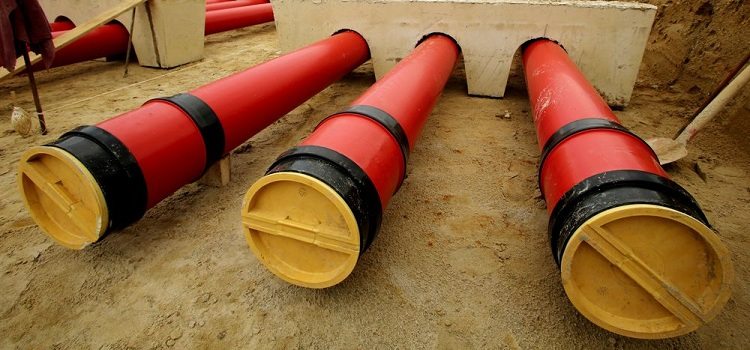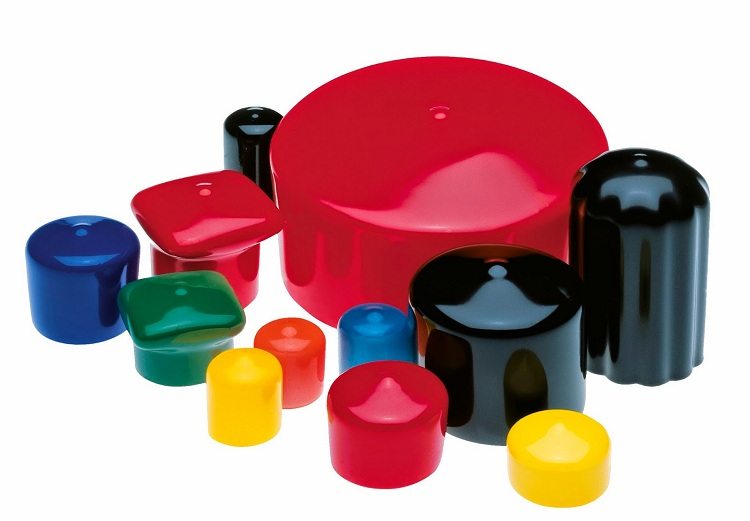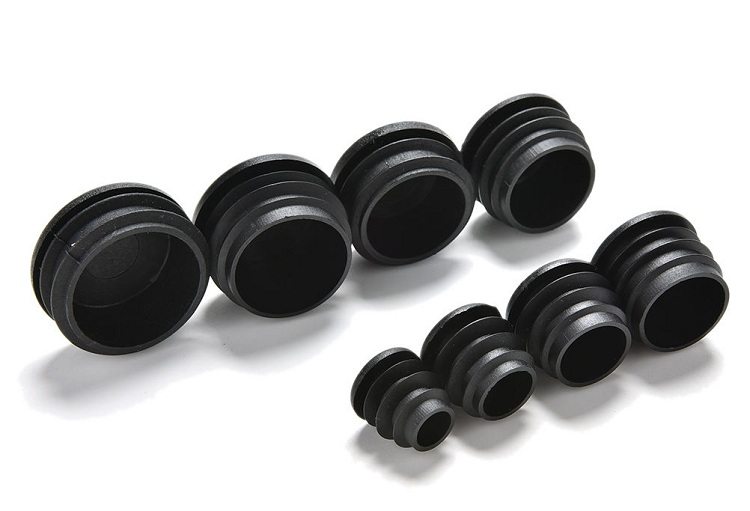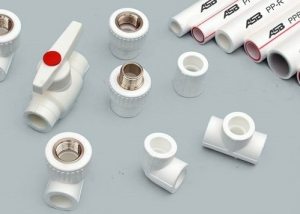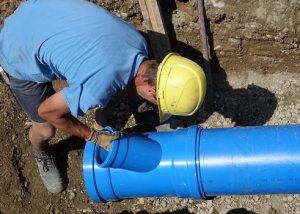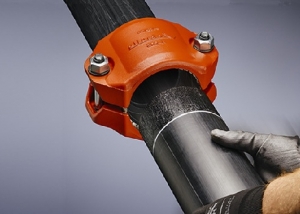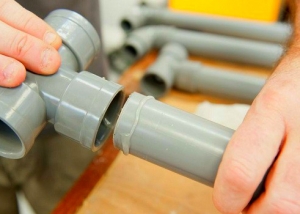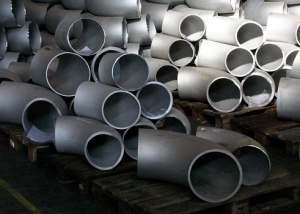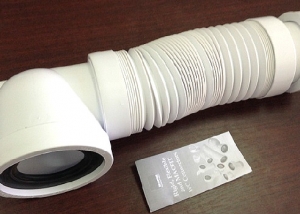Plugs for pipes made of plastic (plastic) - fittings of a rather simple design, which are used to restrict the flow of water in the pipeline. In addition, these shaped elements can be used in other cases when it is necessary to make the pipe airtight: for example, when installing fences. In order to install the plug on the pipe, no special skills are needed. The range of such fittings is wide: both the shapes of the plugs and their diameters vary.
Content
Where are plastic pipe plugs used?
Such shaped parts as plugs are indispensable when the pipeline or its individual part must be insulated. At the same time, it is impractical to weld the end of a metal pipe - it is possible that devices will still be connected to the structure in the future or other segments of the pipeline will be built on it.
Plastic caps are useful in the following cases:
- When installation of the audit in the sewer is required. Due to the specifics of the configuration of the sewage system, it is sometimes more desirable to install a plug on a horizontal pipe section as a prevent clogging than to use special sections of the sewer with a revision.
Important! True, such a solution is irrelevant for apartments in multi-storey buildings, since when this part is removed, the environment in the system will begin to pour out. A more acceptable option would be to use an oblique tee, directed upward by the bell.
- Restriction of water supply in a certain branch of the sewer. When a repair or installation of a water supply or sewage system is carried out, and some elements (devices) are not ready for installation, the pipeline is most often temporarily shut off. The same method works in case of emergency in the house.
- Plugs can be used as a decorative element. Square plastic corks have found such an application in the furniture industry. When installing fences from professional pipes and sheet flooring, pillars also need to be sealed so that debris and moisture do not get into their cavity.
- When working with polypropylene pipes. Plastic plugs for polymer pipes are welded onto a pipe segment using a soldering iron. If it is necessary to resume the water supply, the fitting is simply cut off. Any other fitting can be welded into place.
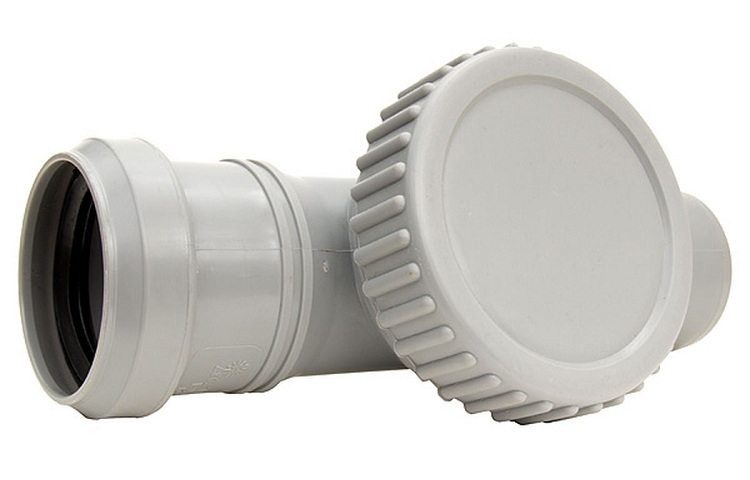
In new sewage systems, plugs are installed in places where consumers are planned to be connected in the future
In addition, plugs are also available for pipes in polyurethane foam insulation. Metal fittings with an output cable are not supplied as separate products, they can only be purchased complete with pipes. With thermally insulated pipes, it is also possible to use a polymer plug for PPU pipes. This fitting protects uninsulated steel sections from moisture and is also able to guarantee the integrity of the remote control cable.
How to choose a plastic plug correctly?
You can even choose a fitting for sealing without consulting a professional.In addition to visual characteristics (smooth surface, lack of factory defects, uniformity of material), you should pay attention to the technical properties of the plugs:
- Section. To isolate water supply and sewage systems, plastic plugs for pipes with a circular cross section are used. They must exactly match the diameter of the pipeline. For profile designs, you need not round, but rectangular or square corks. These shaped elements, in turn, must fit the length of the pipe and the length of the pipe.
- Material. Plastic plugs for pipes, both square and round, are made of the same material as the products that need to be insulated. PVC fittings are designed for PVC pipes, respectively, and HDPE pipelines can be insulated only with low-pressure polyethylene fittings.
- Destination Fittings are characterized by a degree of reliability. If a temporary limitation of the system is required, then shaped elements intended for manual clogging are quite suitable. For fixing for a long time fittings for welding or with a threaded connection are needed.
For decorative purposes, polyethylene plugs are most often produced. This material has a low price, it is plastic and soft. Such shaped elements can have different colors: color is added to the polyethylene when the polymer is in the molten state. This property allows you to maintain a uniform surface color of the fitting even when defects appear on it due to active use.
Installation of plugs in pressure and non-pressure pipelines
The way to install fittings will differ depending on whether the pipeline is pressure or pressureless. If the system is pressureless, then the pressure of the medium in it will be minimal, and usually does not exceed one atmosphere. In this case, the installation of plugs is possible in the socket. Installation of plugs in non-pressure systems is carried out in several steps:
- It is necessary to choose a fitting installed in the socket with optimal characteristics: diameter, cross-section, material of manufacture. Together with a plastic plug for round pipes, a rubber sealing ring is purchased - it will give the joint greater strength.
- Before mounting, a rubber ring is installed on the pipe section.
- The walls of the fitting are lubricated with soapy water. The product is manually entered into the pipe: for this, physical efforts must be applied.
Important! Processing with a soap solution not only provides an easier introduction of the fitting into the pipe cavity, but also allows you to determine how tight the connection is. If soap bubbles begin to appear on the surface of the fitting, this will mean that the plug is not installed tightly enough.
- The compression of the seal is checked with a thin metal plate.
An additional seal is not required if the plastic plug performs only decorative functions.
When working with pressure pipelines, manually-molded fittings are useless - under the influence of fluid pressure, the fitting will quickly become defective. Sealing sections of pressure systems is possible by the following methods:
- Detachable connection. For this type of joints, threaded fittings are used. Naturally, a thread should also be cut on a pipe segment. Threaded plugs are used for temporary constructions or for the purpose of closing inspection holes.
- One-piece connection. Fittings are installed by welding, or glued using special glue. The latter method will be less reliable; for greater tightness, a welded joint should be used.
One-piece connections are used for permanent fixation. It is impossible to remove such a plug; the only option is to cut it off together with the pipe section.
The use of a plastic round plug is justified in water and sewer networks, in the organization of which round pipes were used. Both temporary and permanent connections are possible: it depends on the purpose of the stub and the type of system.
